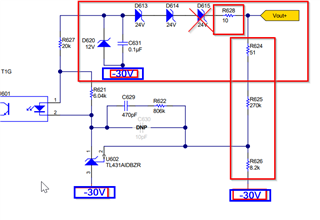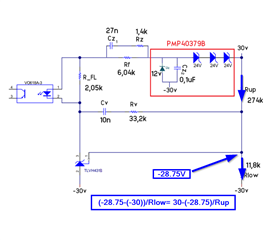Other Parts Discussed in Thread: UCC256302, TLVH431, TLV431
Hello;
I want to make a 180w dual output design with (+30v 3A & -30v 3A) output with UCC256404 only. I do not want to use any secondary rectifier or PFC in front.
I want to get 50mV p2p output ripple. Target efficiency 90+ is fine. Switching frequency is 150Khz.
Input DC voltage will be between 280-345. Nominal will be 325VDC( 230VAC).
Both calculation excel and WEBENCH do not support dual output and negative voltage output. So i choose 30VDC 6A output instead. I guess results will be the same except there 2 secondary winding and feedback network is different so i am planning to copy it from PMP40379B.
Questions;
1) Do you have any suggestion for dual rail output calculation with calculation excel or WEBENCH?
2) Even i enter same parameters in both suggested part values are so different between each tool. Which tool do you suggest me to use?
3) I am glad if you show us how do fill UCC256302 calculation excell to get values in the PMP40379B reference design. I tried but excell gives me different values than reference design.
4) i read Hybrid Hysteretic Control it has very good improvement for T. Response. I also want to implement in my design but pdf guide and datasheet 7.3.1 explain it very theoretically every real world example and suggested calculation tools (excel & webench) is based on Direct Frequency Control. So i s there any reference design using this new method. Or and working example to guide us to build our own.
Thanks in advance....





